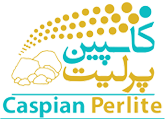An environment and sustainable natural material
100% inorganic natural material that can be traced back to nature
The requirements for future inorganic products cannot be described in a single sentence. One must follow the product from “cradle to grave”, what emissions are there, what dangers to humans, animals and plants, possible resource savings for raw materials, optimization of energy consumption, and optimization of transport.
If this is done in the best possible way, we can talk about a 100% inorganic and sustainable product.
The product group Europerl Perlite
The starting material – Perlite – is a volcanic rock that which is transported in ships from Greece and Turkey. There are very big ones occurrences by Perlite – also elsewhere in the World. During transport, the raw material (which has been sun dried) fills 1/20 of the later expanded volume. The expansion and further processing takes place at Nordisk Perlite in Hillerød, where residual water inside the grains when heated to a soft state causes the grains to “pop up” and give the pore-shaped structure. Energy consumption is relatively low due to targeted efforts including heat recovery in the production process. For insulation purposes, a silicone resin in aqueous solution is added during production in an amount of less than 0.2% (wt).
After reaction with the carbon dioxide of the air the products Potassium carbonate and Methyl silica are formed and the product becomes water resistant. There are no known harmful and toxic properties of these products, either in the human organism or in the soil. All in all, EuroPerl Perlite is manufactured without environmental impact with minimum energy consumption.
100% environmentally safe recycling
As Europerl Perlite is an inorganic and neutral product, there is no risk of it rotting or transforming. This means it can be recycled. There is no need for landfill, and it can easily be returned to nature and even used as soil improvement and 100% pure cultivation for plants.
Sustainable production with significantly reduced CO2 emissions
In the spring of 2013, Nordic Perlite implemented a larger reconstruction of the production plant so that we can today recover a large proportion of surplus heat
from the production process. Through the heat exchangers built into the process, we heat the district heating water, which via 1.8 km of pipelines in the ground are brought to Hillerød district heating plant. The recycled energy is equivalent to heating 400 houses in a year or 1800 tonnes of CO2. See TV clips from TV2 Lorry.
Conclusion
Europerl Perlite is one nonflamable natural material with many uses. The water-repellent and diffusion-open properties mean that no heat losses occur during wetting and allow the use of building structures that are free of foils and air slits, especially in wood and roof structures. Europerl Perlite comes from nature and can be returned to nature. You can consider Europerl Perlite as an ecologically useful material.




